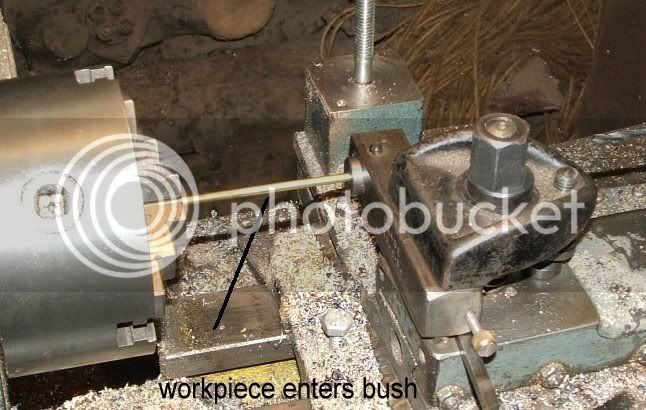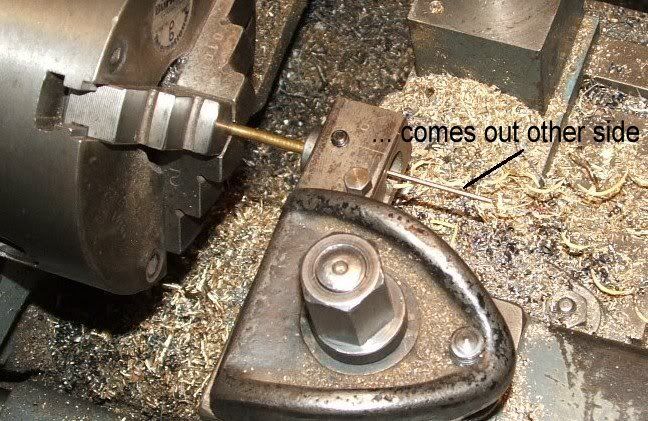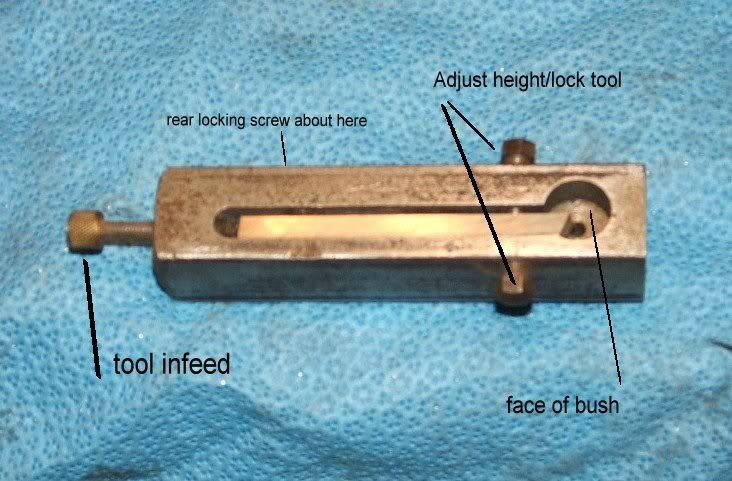Hi Guys,
I know this must be really basic and second nature to most of you, but my slow progress has hit the wall with my present workpiece. Im trying to make a 5mm diameter cotter pin about 25mm long, using 8mm mild steel stock (The manager at the agri co-op told me it is EN2B), lathe running at 1000rpm, HSS and soluble oil coolant. The smallest I have turned before this is 6mm and that not too successfully. Im quite wary of running the lathe so fast, but it sounds good and is not vibrating, so I think Im ok on that score. I read somewhere that small diameters give you a steeper front clearance, but I dont think I understand the implications. Should I grind a tool with near vertical front clearance? What about top rake?
5mm is gross big compared to some of the parts you guys are making, Im only starting to work small. What I do instead of roughing it to near finish size is to try with many finish cuts as practice but I dont get nearly as good a surface as if I were turning about 15mm. What am I doing wrong, or is it my tooling?
Thanks,
Ant
I know this must be really basic and second nature to most of you, but my slow progress has hit the wall with my present workpiece. Im trying to make a 5mm diameter cotter pin about 25mm long, using 8mm mild steel stock (The manager at the agri co-op told me it is EN2B), lathe running at 1000rpm, HSS and soluble oil coolant. The smallest I have turned before this is 6mm and that not too successfully. Im quite wary of running the lathe so fast, but it sounds good and is not vibrating, so I think Im ok on that score. I read somewhere that small diameters give you a steeper front clearance, but I dont think I understand the implications. Should I grind a tool with near vertical front clearance? What about top rake?
5mm is gross big compared to some of the parts you guys are making, Im only starting to work small. What I do instead of roughing it to near finish size is to try with many finish cuts as practice but I dont get nearly as good a surface as if I were turning about 15mm. What am I doing wrong, or is it my tooling?
Thanks,
Ant







